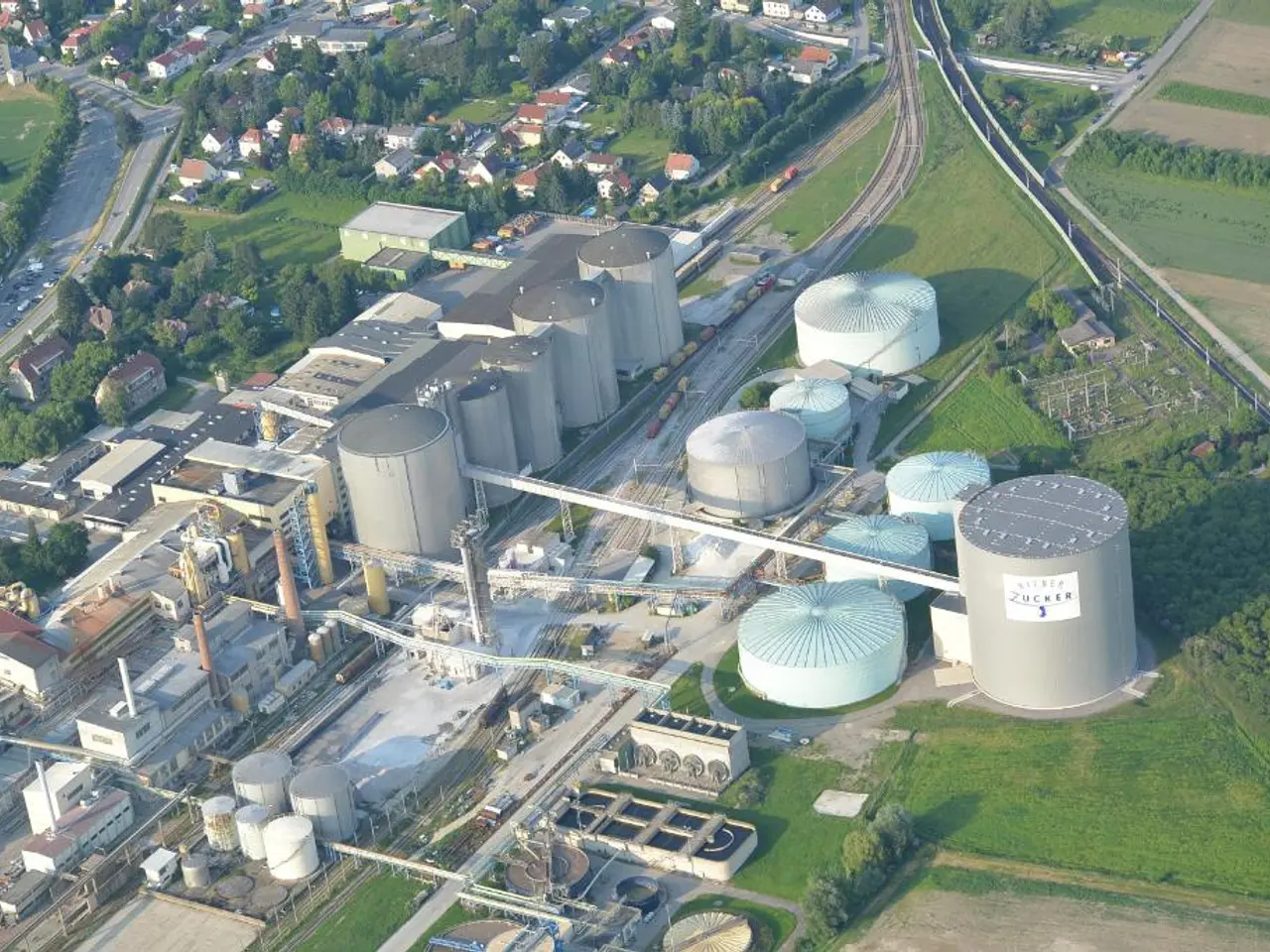Industrial production in Germany increased beyond expectations in May.
Germany's industrial production saw a surprising 1.2% increase in May 2025 compared to the previous month, bucking predictions of flat growth. This rebound followed a revised 1.6% decline in April and was largely driven by strong gains in the automotive sector (up 4.9%) and energy production (up 10.8%), as well as a 10% rise in pharmaceuticals [1][2][3].
The increase in these sectors was supported by factors such as strong production growth in the automotive sector, substantial production increases in the energy sector, and higher demand for pharmaceuticals, especially from the United States ahead of potential new tariffs. However, production in energy-intensive industries fell by 1.8%, and construction output contracted by 3.9% [1][3].
Excluding energy and construction, industrial production still rose by 1.4% from April, reflecting underlying strength in manufacturing capital goods and consumer goods. This three-month average increase of 1.4% over the previous quarter suggests an early-stage recovery in the manufacturing sector after previous setbacks [1][2].
The outlook for the manufacturing sector's recovery is cautiously optimistic. The German government has introduced a tax relief package aimed at supporting investment and lifting the economy following two years of contraction, which may bolster future growth. However, ongoing concerns remain regarding trade tensions, a stronger euro, and weather impacting river transport, which could pose risks to sustained recovery. Gross domestic product (GDP) growth is not expected in the second quarter, but some improvement is anticipated in the coming quarters as conditions stabilize and investment support takes effect [2].
In summary, the increase in May was largely fueled by robust production in the automotive and energy sectors, with pharmaceuticals also contributing amid strong demand. While challenges persist, recent data signal the beginning of a modest recovery in Germany’s manufacturing and industrial sectors [1][2][3].
It is important to note that industrial production levels are still far below those seen after the initial recovery phase following the pandemic. The statistics office revised the April industrial production figure to a 1.6% decline. Nevertheless, analysts and economists remain hopeful that the recovery will continue, given the positive signs in the data and the government's efforts to stimulate growth.
Sources: [1] BBC News, "Germany's industrial production rises more than expected," 12 June 2025. [2] Reuters, "German industrial orders fall 1.4% in May," 10 June 2025. [3] Financial Times, "German industrial production up 1.2% in May," 11 June 2025.
- The strong growth in the automotive sector, supported by factors such as production increases in energy and robust demand for pharmaceuticals, particularly from the United States, was a significant contributor to the overall increase in industrial production in Germany's manufacturing sector.
- The positive signs of recovery in Germany's manufacturing sector, as evidenced by the succcessive increases in industrial production, are largely due to the robust performance of industries like automotive, energy, and pharmaceuticals, although challenges still persist in certain sectors such as energy-intensive industries and construction.




